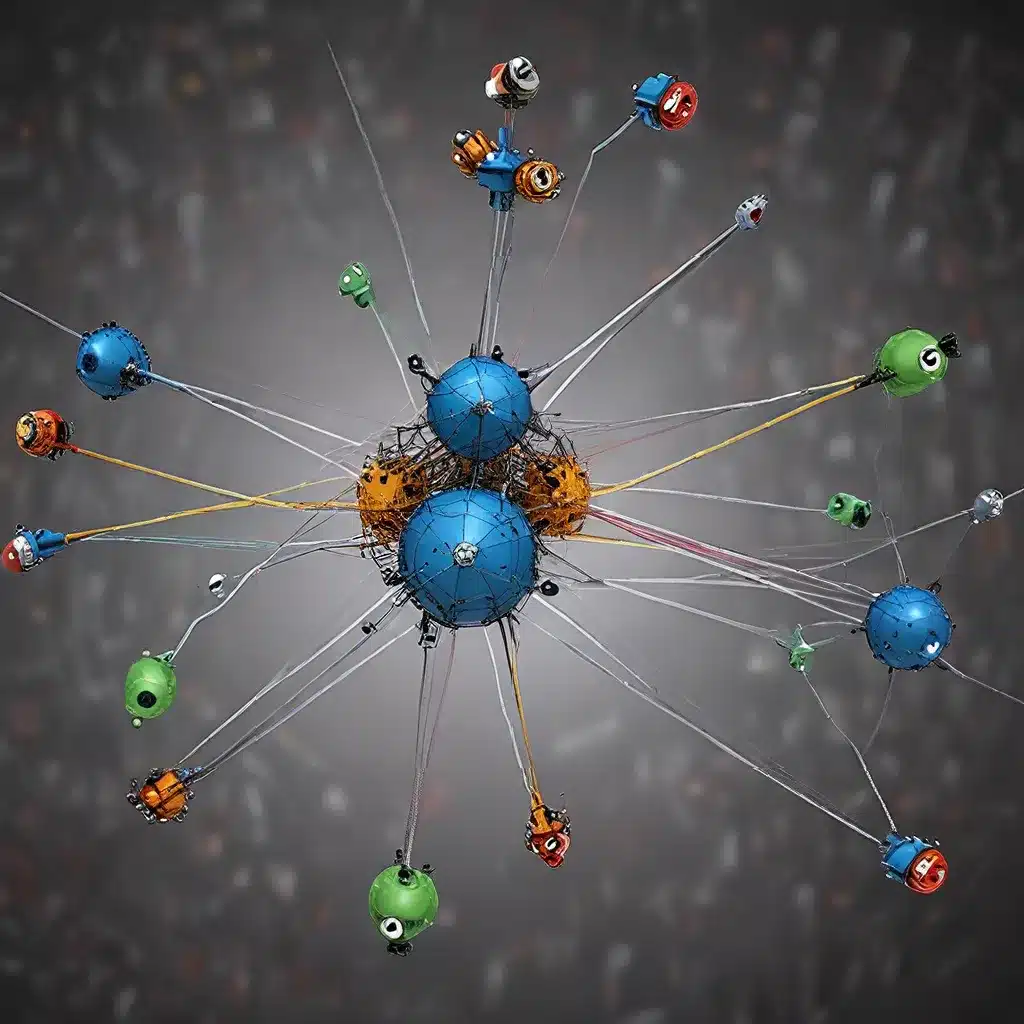
Navigating the Complexities of Sensor Networks and IoT
In the rapidly evolving world of sensor networks and the Internet of Things (IoT), the challenge of maintaining precise control and regulation over these distributed systems has become increasingly crucial. As these technologies continue to shape our connected world, distributed feedback control mechanisms have emerged as a pivotal strategy for ensuring the efficient, reliable, and secure operation of sensor network deployments.
Understanding Sensor Network Dynamics
Sensor networks are complex, interconnected systems that rely on the seamless collaboration of numerous sensor nodes to gather and transmit critical data. These nodes are often deployed in diverse and challenging environments, requiring robust mechanisms to maintain their optimal performance and responsiveness. At the heart of this challenge lies the need for dynamic regulation and feedback control, enabling sensor networks to adapt to changing conditions, mitigate failures, and optimize resource utilization.
Sensor network regulation involves the deployment of control algorithms that continuously monitor the network’s behavior, identify deviations from desired states, and issue corrective actions to maintain the system’s integrity. These control mechanisms leverage real-time data from sensor nodes, routing information, and network-wide metrics to adjust parameters such as transmission power, sampling rates, and node clustering, ensuring optimal performance and energy efficiency.
Applying Distributed Control Strategies
The complexity of sensor networks necessitates the adoption of distributed control approaches, where decision-making and control actions are dispersed across the network, rather than relying on a centralized authority. This distributed model enhances the resilience and scalability of sensor networks, enabling them to adapt to dynamic environments and accommodate the growth of connected devices.
One key aspect of distributed control mechanisms is the use of feedback loops, where sensor nodes continuously monitor their own performance and exchange data with neighboring nodes. This allows for real-time adjustments to be made at the local level, addressing issues such as energy depletion, connectivity fluctuations, and data congestion. By empowering individual nodes to make informed decisions based on their immediate context, distributed control strategies can proactively mitigate challenges and maintain the overall stability of the sensor network.
Distributed control mechanisms also facilitate the decentralization of decision-making, enabling sensor nodes to collectively respond to changes in the network without relying on a single point of failure. This approach enhances the fault tolerance of sensor networks, ensuring that the failure of individual nodes or communication links does not compromise the overall system’s functionality.
Optimizing Energy Efficiency in Sensor Networks
Energy management is a critical consideration in the design and operation of sensor networks, as sensor nodes are often battery-powered and deployed in remote or inaccessible areas. Distributed control strategies can play a pivotal role in optimizing energy consumption, ensuring that sensor nodes operate at their most energy-efficient states while maintaining the required level of data collection and transmission.
Control algorithms can dynamically adjust parameters such as duty cycles, transmission power, and node clustering to minimize energy usage without compromising the network’s performance. By leveraging feedback from individual nodes and coordinating their actions, distributed control mechanisms can effectively manage the trade-offs between energy efficiency, data quality, and network reliability.
Moreover, the decentralized nature of distributed control enables sensor networks to adapt to changing environmental conditions, resource constraints, and application requirements in real-time. This adaptive capability is crucial in ensuring the long-term sustainability and viability of sensor deployments, especially in scenarios where manual intervention or infrastructure maintenance is challenging or infeasible.
Securing Sensor Networks through Distributed Control
As sensor networks and IoT systems become more prevalent, the need for robust security measures has become increasingly crucial. Distributed control mechanisms can play a vital role in enhancing the security of these systems by implementing real-time monitoring, anomaly detection, and adaptive response strategies.
By leveraging the distributed intelligence of sensor nodes, control algorithms can detect and mitigate security threats, such as unauthorized access, data tampering, or denial-of-service attacks, in a decentralized manner. This approach not only enhances the overall resilience of the network but also reduces the risk of single points of failure that could be exploited by malicious actors.
Furthermore, distributed control mechanisms can facilitate the dynamic reconfiguration of sensor networks in response to detected threats, enabling the system to adapt and recover from security breaches without compromising its core functionality. This adaptive capability is particularly valuable in IoT applications, where sensor networks are often deployed in public or untrusted environments.
The Future of Sensor Networks and IoT
As the Internet of Things continues to permeate our lives, the role of sensor networks and distributed control mechanisms will become increasingly pivotal. These technologies will shape the way we monitor, manage, and optimize a wide range of applications, from smart cities and industrial automation to environmental monitoring and healthcare.
Sensor-networks.org is at the forefront of this evolving landscape, providing a comprehensive platform for professionals, researchers, and enthusiasts to explore the latest advancements in sensor network design, IoT applications, security, and energy management. By embracing the power of distributed feedback control, the sensor network community is poised to unlock new levels of efficiency, resilience, and innovation in the years to come.